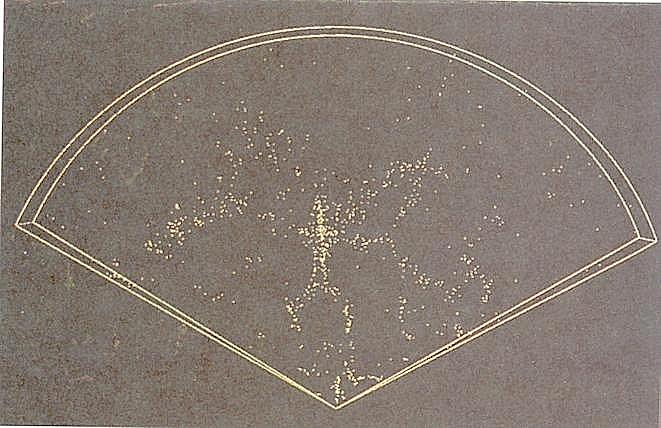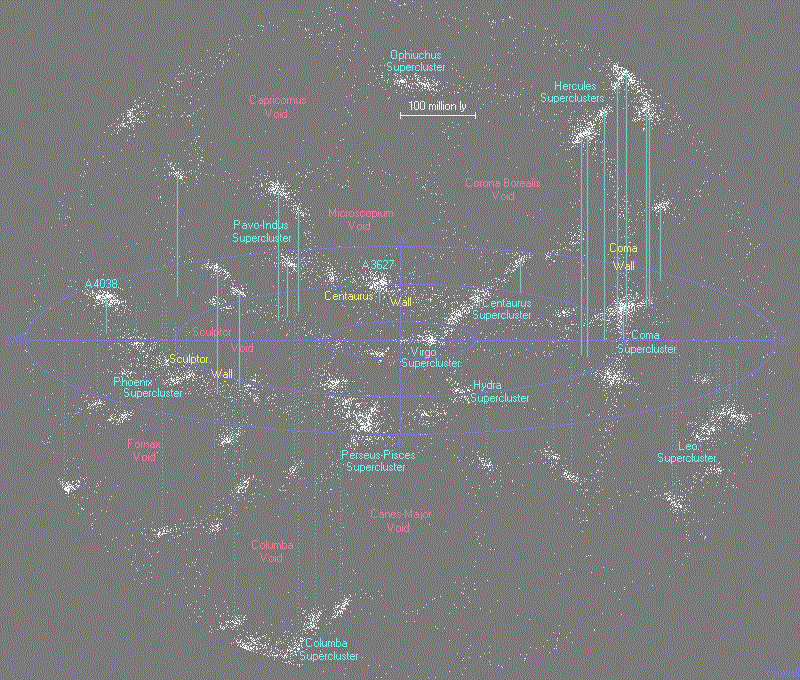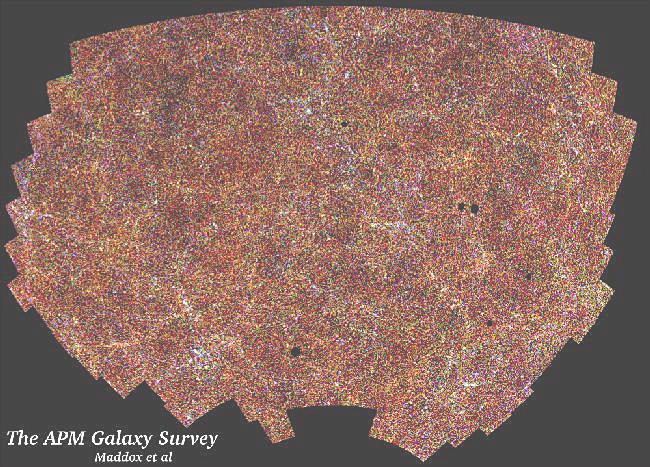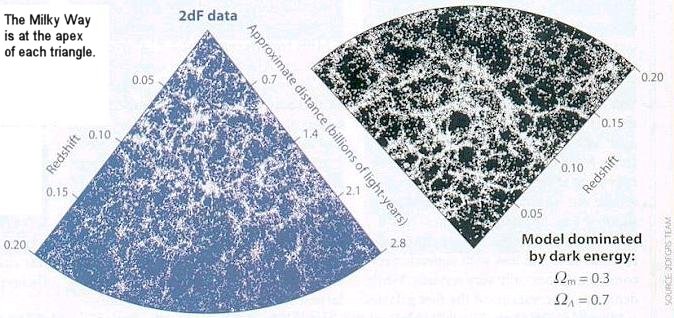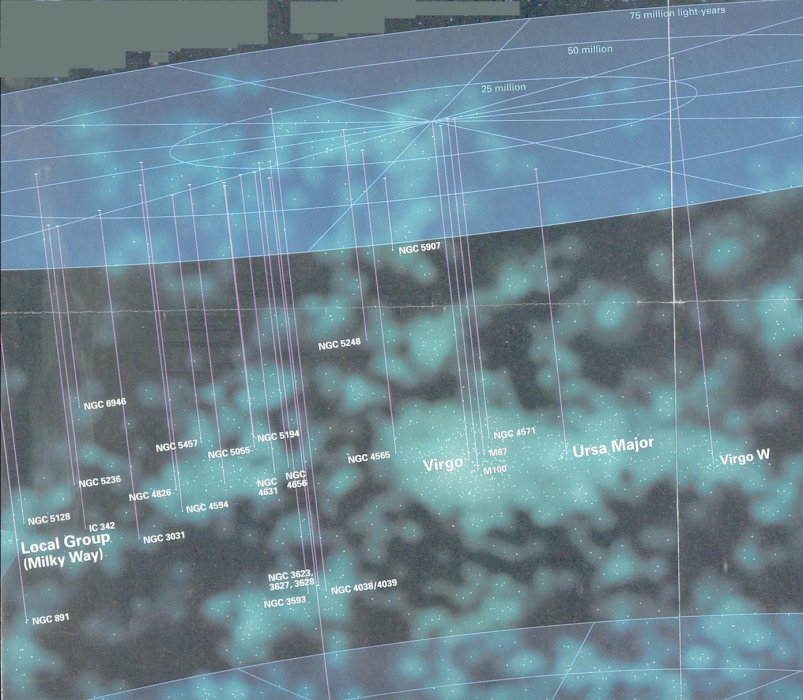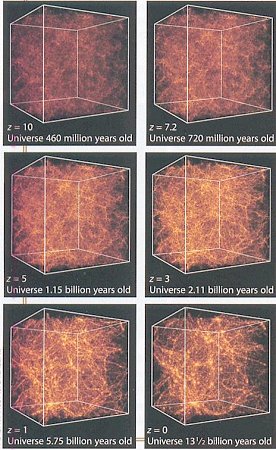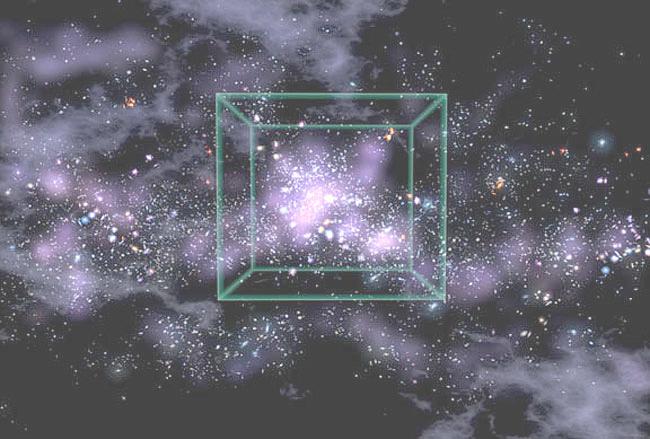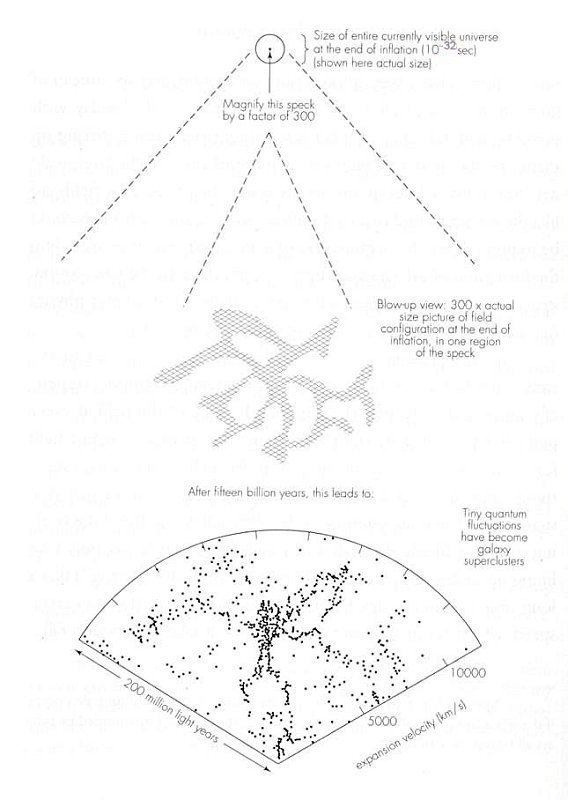 |
Most theories attribute the origin of large scale structures to quantum fluctuation, which occurred near the beginning of Big Bang. The fluctuation is subsequently enlarged by the inflation and served as a blue-print for the large scale structures such as the superclusters. Figure 03-08 depicts the supercluster formation from quantum fluctuations. The dot at the top shows the actual size, just at the end of inflation. An enlargement (about 300X) of a small section of the universe at this time is shown in the middle. Eventually, after about 14 billion years, the imprint has accumulated enough matter and form the Coma supercluster today. In gravitational terms, the superclusters are merely slight irregularities on a basically smooth universe. It requires only one part in 100,000 of its rest-mass energy to pull the structure apart.
There is a problem with the formation of superclusters. Theory associates a characteristic time for the gravitational settling near the center of a clump. For a density fluctuation of 1.7%, it is of the order of 1 billion years; it would be 13 billion years for 0.3% fluctuation, etc. However, CMBR measurements imply a fluctuation of only 0.001%, which requires a settling time 1000 times longer than the age of the universe. The inconsistency can be resolved only if there is "dark matter" to enhance the fluctuation.
|
